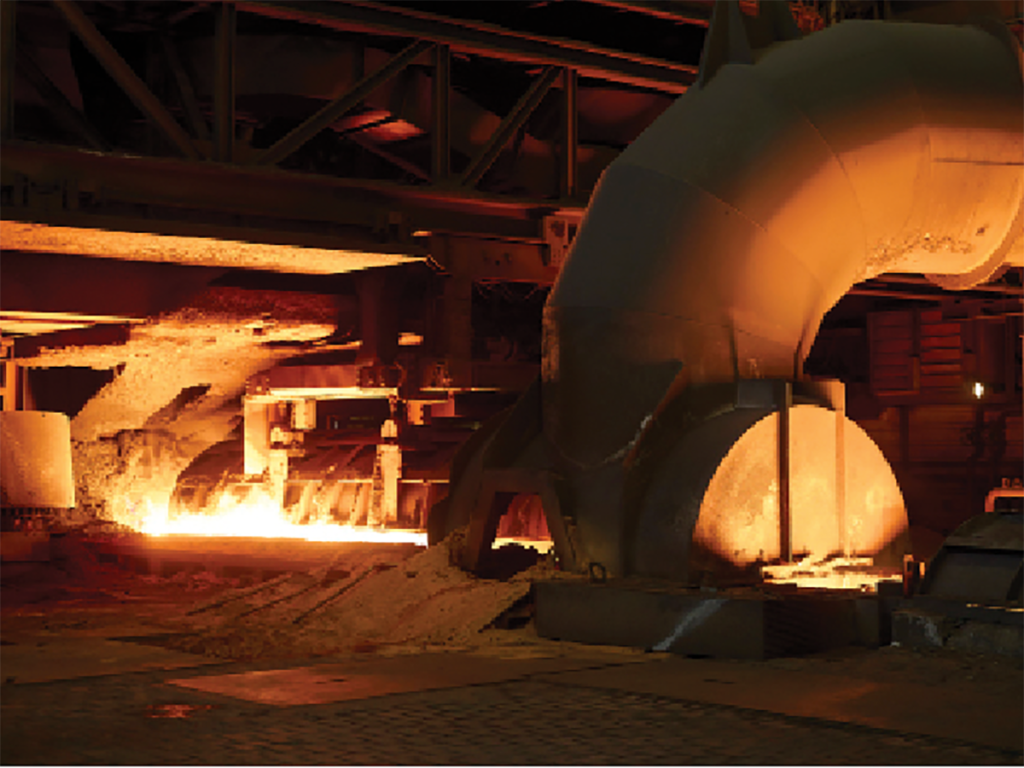
Recent agreements with Japan and the EU indicate the administration’s hybrid approach
The Section 232 tariffs were introduced by former President Donald J. Trump in June 2018, when he imposed a 25% tariff on European and Japanese steel on national security grounds. While the tariffs gained support from domestic steel manufacturers, they were opposed by U.S. steel users, because, combined with the effects of the pandemic, they caused steel shortages and higher prices. Ford Motor Company, for one, estimated that the Section 232 tariffs raised the costs of its U.S.-based manufacturing by $1 billion.
New Agreements
Both the Japan and EU agreements allow a specified volume of steel to flow into the U.S. tariff-free, based on different historical reference points, while quantities above those levels will still be subject to a 25% “tariff-rate quota” (TRQ). Under the agreement with Japan, 1.25 million metric tons per year is the quantity eligible for tariff-free treatment, allocated quarterly over 54 categories based on import levels in 2018-2019. The EU agreement allows 3.3 million tons in tariff-free, equivalent to average annual exports between 2015 and 2017. Whether those volumes, combined with domestic supply, will be enough to satisfy U.S. demand in a time of increased infrastructure spending is questionable.
The differing historical reference periods for each agreement is notable, because, according to Richard Ferrin, customs and international trade counsel at Faegre Drinker, steel exports from Japan “sharply declined following the 2018 implementation of the Section 232 steel tariffs,” so, that “the 2018-2019 based metrics result in a lower TRQ as compared to 2015-2017.”
The Japan agreement also differs from the EU in that “it likely will count Japanese steel currently excluded from the Section 232 tariffs against the new TRQ limits,” according to Scott Lincicome, director for general economics and trade at the Cato Institute. It’s possible these differences were negotiated because, unlike the EU, Japan will not be joining the U.S. in framing a new Global Sustainable Steel Arrangement, an effort, explained Ferrin, “to decarbonize the steel and aluminum industries by establishing new standards for carbon intensity.”
The result, however, is that the TRQ for Japan, according to Lincicome, “has been set even further below the amounts that would likely enter the U.S. today in the absence of any trade restrictions.” Japanese steel imports averaged over two-million tons during the pre-duty timeframe between 2015 and 2017, “a period that was experiencing far less industrial demand than today.” Thus, Lincicome concluded, “the new TRQ level is, at best, set at a paltry 61% of current U.S. market demand and probably much lower than that.” The result will be to “keep U.S. steel prices high, leaving steel-consuming American manufacturers at a significant disadvantage versus their global competitors.”
Impact of US Demand for Steel
For U.S. industries represented by the Coalition of American Metal Manufacturers and Users (CAMMU), the TRQ scheme is unworkable even under the more generous EU agreement, where, according to a statement, “some steel products’ quota filled up for the year in the first two weeks of January” as large companies stockpiled product. “This type of government restriction on raw materials,” the statement added, “leads to market manipulations and allows for gaming of the system that puts this country’s smallest manufacturers at an even further disadvantage.”
Meanwhile, the Biden administration’s infrastructure program will likely goose domestic steel demand. “Just about any infrastructure project, such as energy, rail, roads, and bridges,” said Ed Bastian, director global sales at BBC Chartering USA, an operator of multi-purpose and heavy lift vessels, “will require significant amounts of steel manufactured goods.” The $300 million manufacturing plant being built at the Paulsboro Marine Terminal in New Jersey to provide monopiles for regional offshore wind farms, for example, will require 150,000 tons of imported steel annually to meet its customers’ demands, according to Brendan Dugan, the assistant executive director of the South Jersey Ports Corporation (SJPC).
The infrastructure bill “does provide a Buy American provision,” noted Bastian. “However, there are also provisions for a waiver system and other cost thresholds which could open the door for foreign suppliers.” But imported steel will still be subject to existing tariffs, including the EU and Japan TRQs, should import volumes exceed the levels specified in the respective agreements.
It’s worth noting that the imposition of the Section 232 tariffs was based on suspect national security assertions by the former president. No country involved in either of these agreements has represented a security threat to the U.S. since the end of World War II, making the tariffs ill-advised from the get-go. So, it’s unfortunate, from that perspective, that the Biden administration has seen fit to continue the tariffs in any form.
But Biden had to navigate between two important priorities: mending relationships imperiled by Trump with traditional allies and supporting the interests of the domestic steel industry and its labor unions. The latter, not surprisingly, have had nothing but praise for the recent agreements. Also, as noted in statements from U.S. Trade Representative Katherine Tai, the Biden administration views the EU and Japan Section 232 tariff agreements as a step toward achieving other U.S. policy initiatives, including those relating to U.S. competition with China and global efforts to combat climate change.
Considering that these important U.S. allies have agreed to go along with these schemes, it is perhaps forgivable that Biden, purely from a policy and political standpoint, should have preserved an aspect of Trump’s trade agenda. But whether these agreements will allow U.S. domestic demand for steel to be satisfied at reasonable prices in the current environment is another matter.




